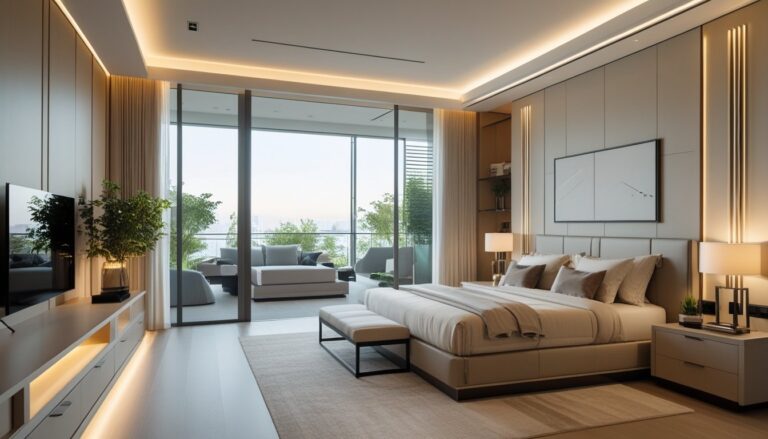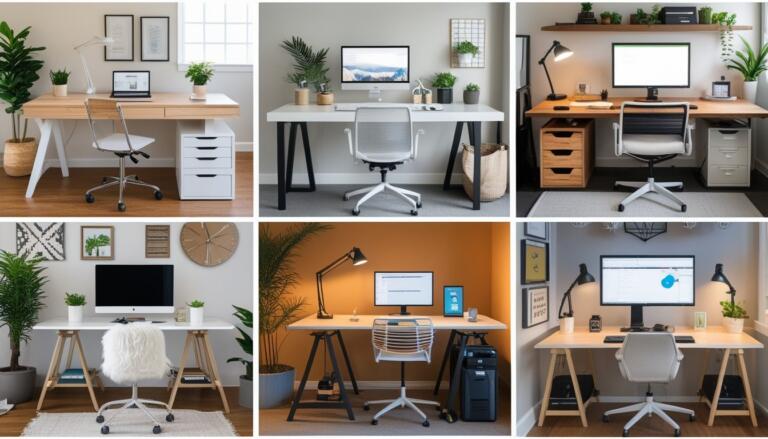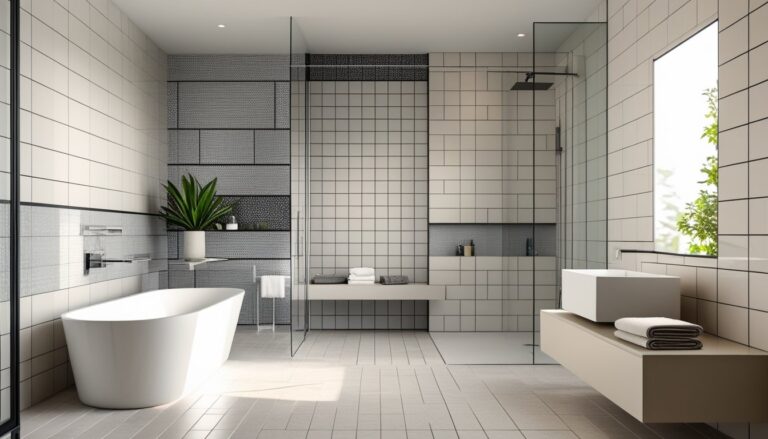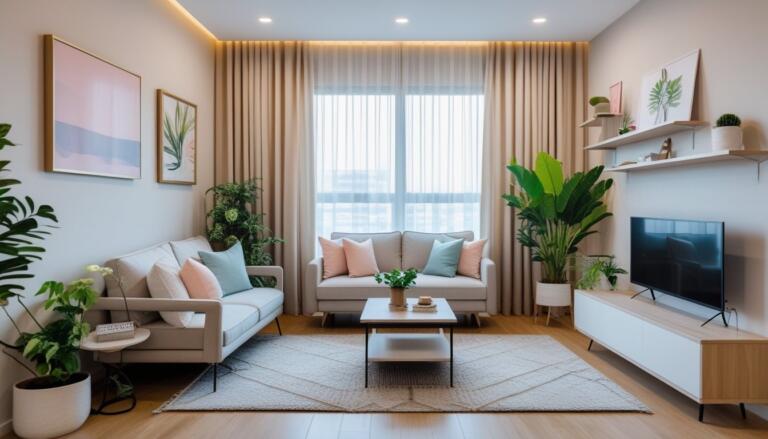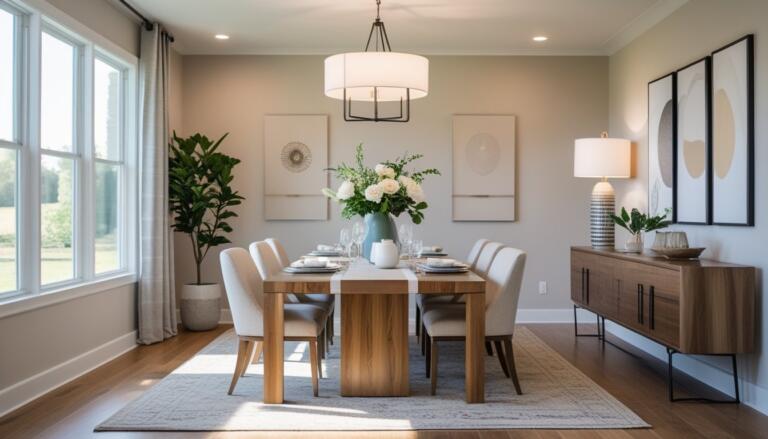10 Bedroom Decor Ideas to Transform Your Space with Style and Functionality
Many people want their bedroom to feel comfortable and look nice but aren’t sure where to start. Decorating a bedroom can be simple with the right ideas, no matter the size or style. It’s important to focus on creating a space that suits daily needs while reflecting personal taste.
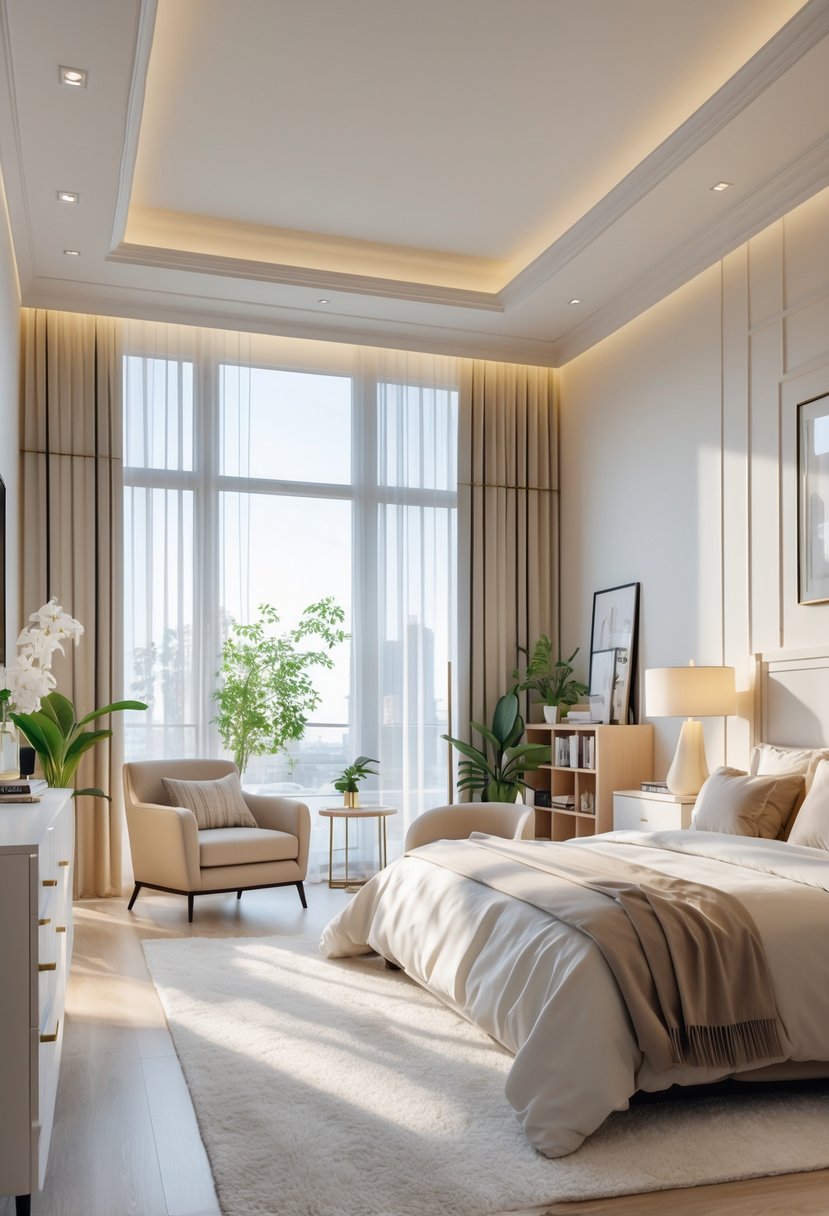
The key to successful bedroom decor is finding ideas that balance style and function. This article will explore different ways to enhance a bedroom’s look and feel, helping anyone make their room more inviting and practical.
1) Layered lighting with floor lamps and pendant lights
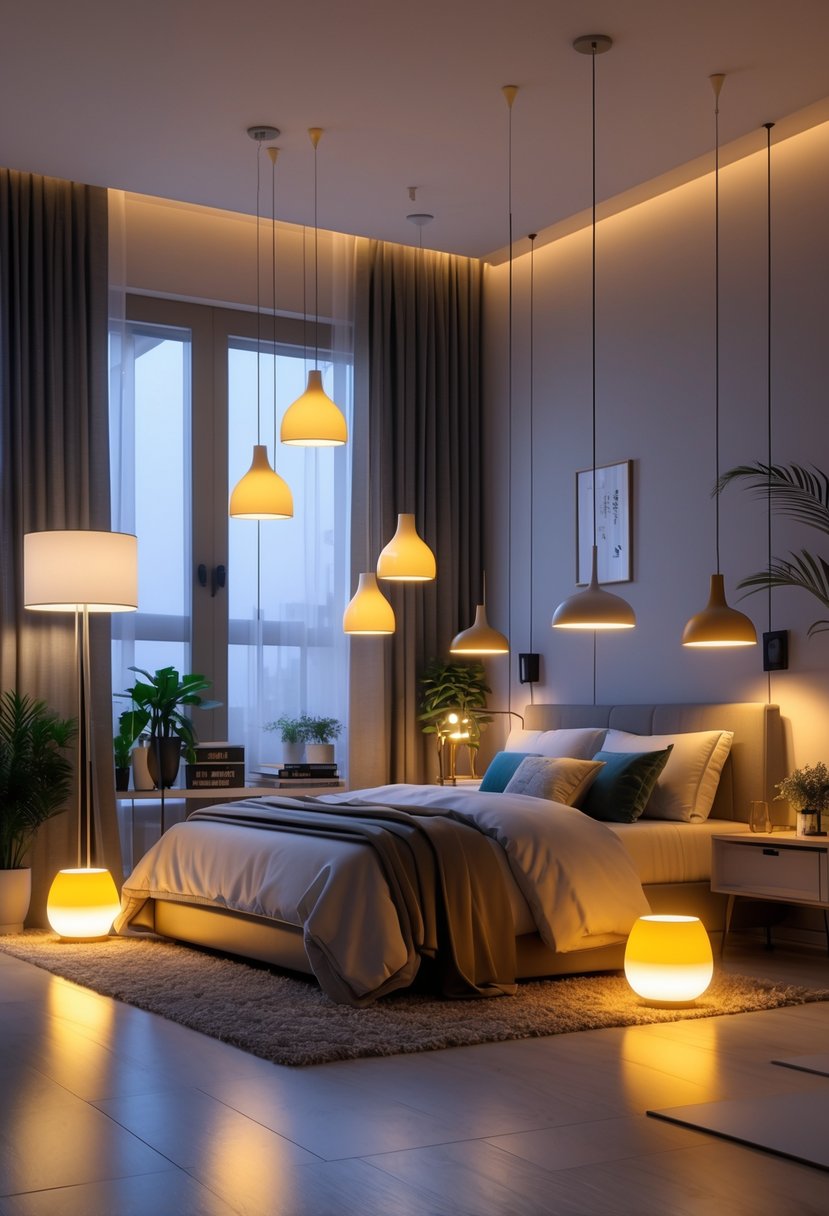
Layered lighting uses different light sources at once to create a balanced look. Floor lamps add height and can brighten dark corners effectively. Pendant lights hang from the ceiling and provide even, general lighting.
Together, they offer both task and ambient light. This mix helps adjust the mood and makes the bedroom feel more inviting. Using these types of lights allows for flexible lighting that suits different needs throughout the day.
2) Incorporate a statement headboard in velvet or tufted leather

A statement headboard in velvet or tufted leather can change the look of a bedroom. Velvet adds a soft, elegant texture. It works well in rich colors like emerald or navy.
Tufted leather offers a sleek, durable option. It adds a touch of sophistication and warmth. Both materials create a focal point that blends style and comfort without overwhelming the room.
3) Use neutral paint tones with bold accent walls
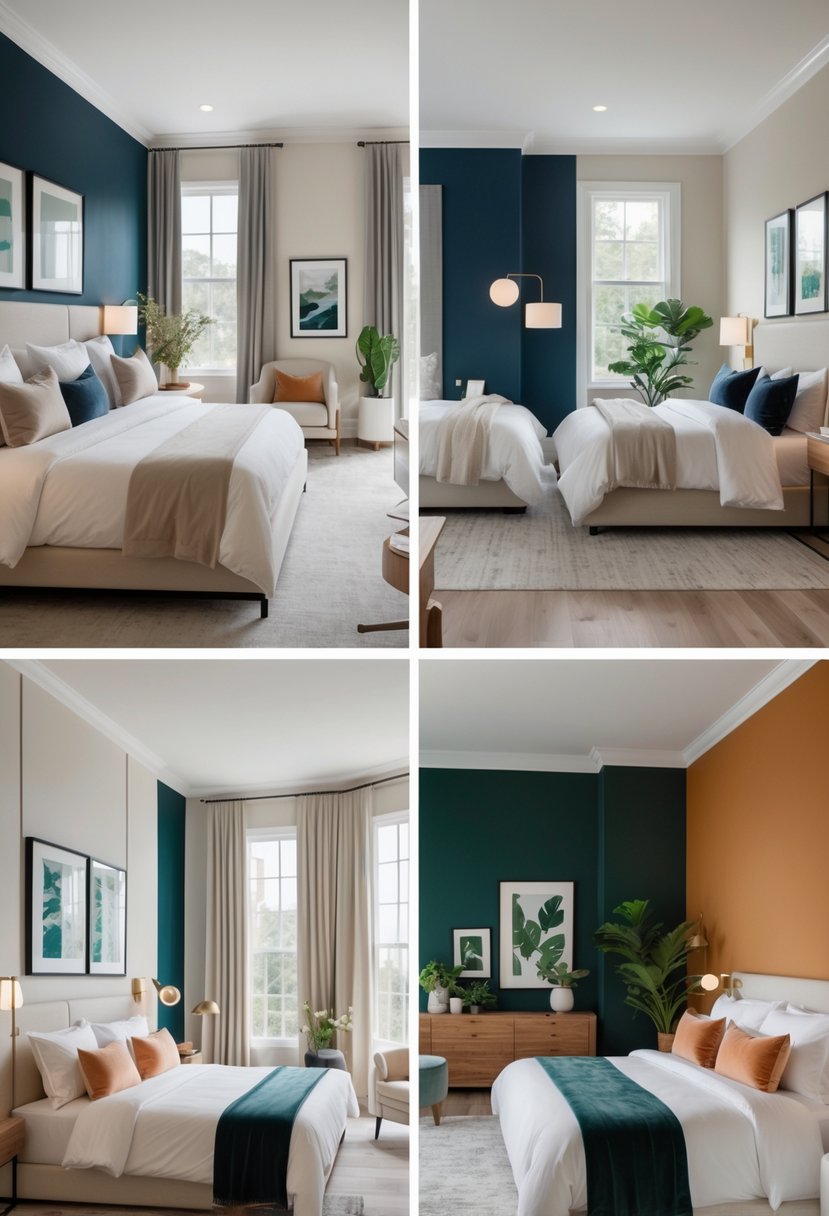
Using neutral paint tones creates a calm and clean base for a bedroom. These colors help the space feel spacious and relaxing.
Adding a bold accent wall brings life and personality without overwhelming the room. It draws attention and creates a focal point.
This mix balances calmness and energy. It also allows for easy updates by changing the accent wall color while keeping the rest neutral. Textures or patterns can make the accent wall stand out even more.
4) Add textured rugs for warmth and depth
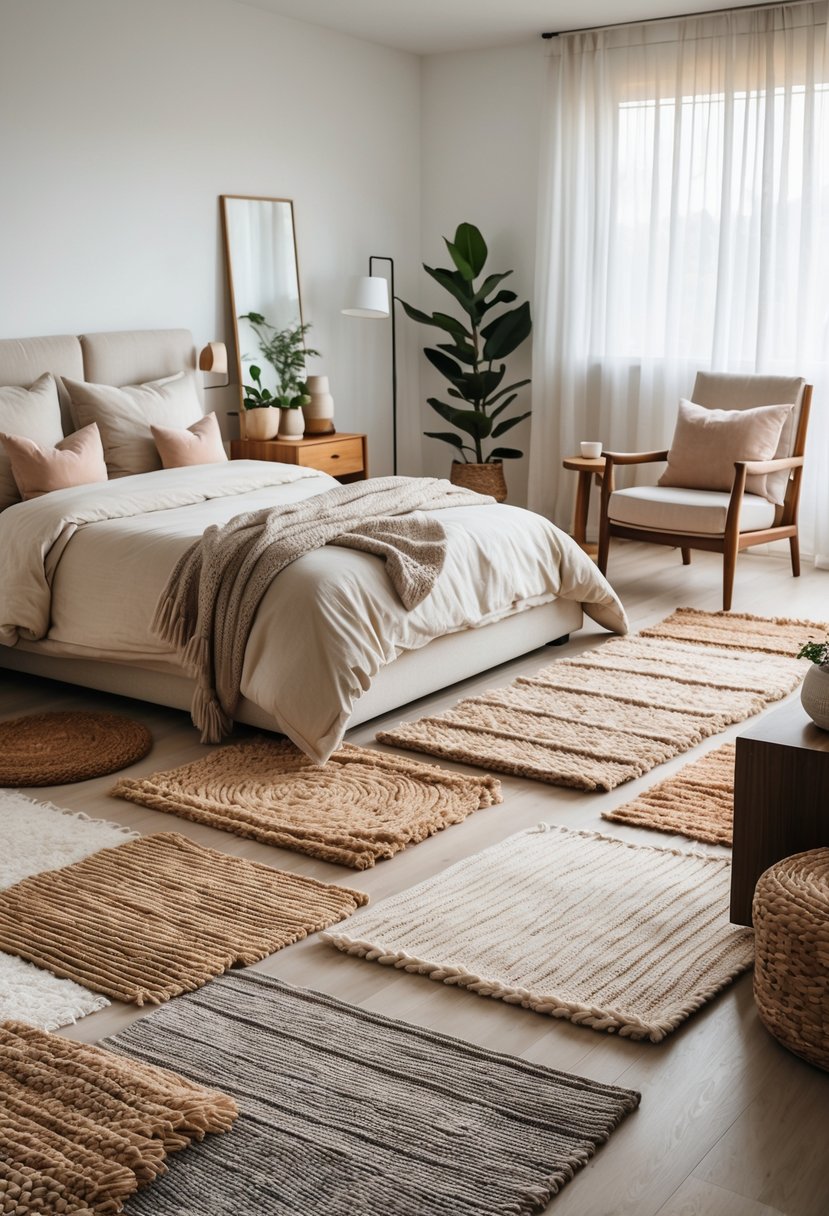
Textured rugs bring a cozy feel to a bedroom. They add layers that make the space look more inviting and comfortable.
Using rugs with natural fibers like jute or wool can create a soft, warm surface underfoot.
Layering rugs with different textures or patterns also adds visual interest without crowding the room. Choosing neutral colors helps keep the look calm and balanced.
5) Install floating shelves for stylish storage
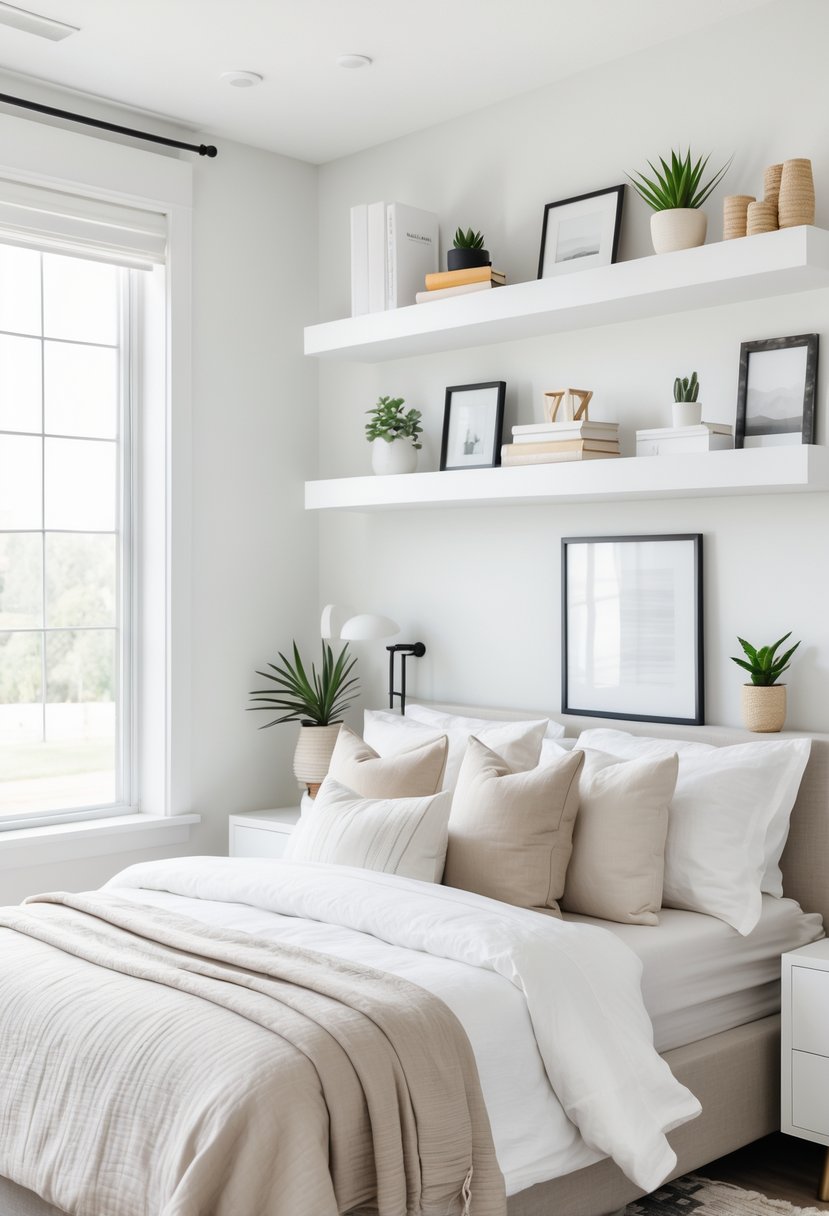
Floating shelves add extra storage without taking up floor space. They create a clean, modern look that fits many bedroom styles.
They are easy to install and can hold books, decor, or everyday items. This keeps things organized and within reach.
The simple design helps reduce clutter while showing off personal items. Floating shelves make a room feel more open and neat.
6) Choose blackout curtains for better sleep quality
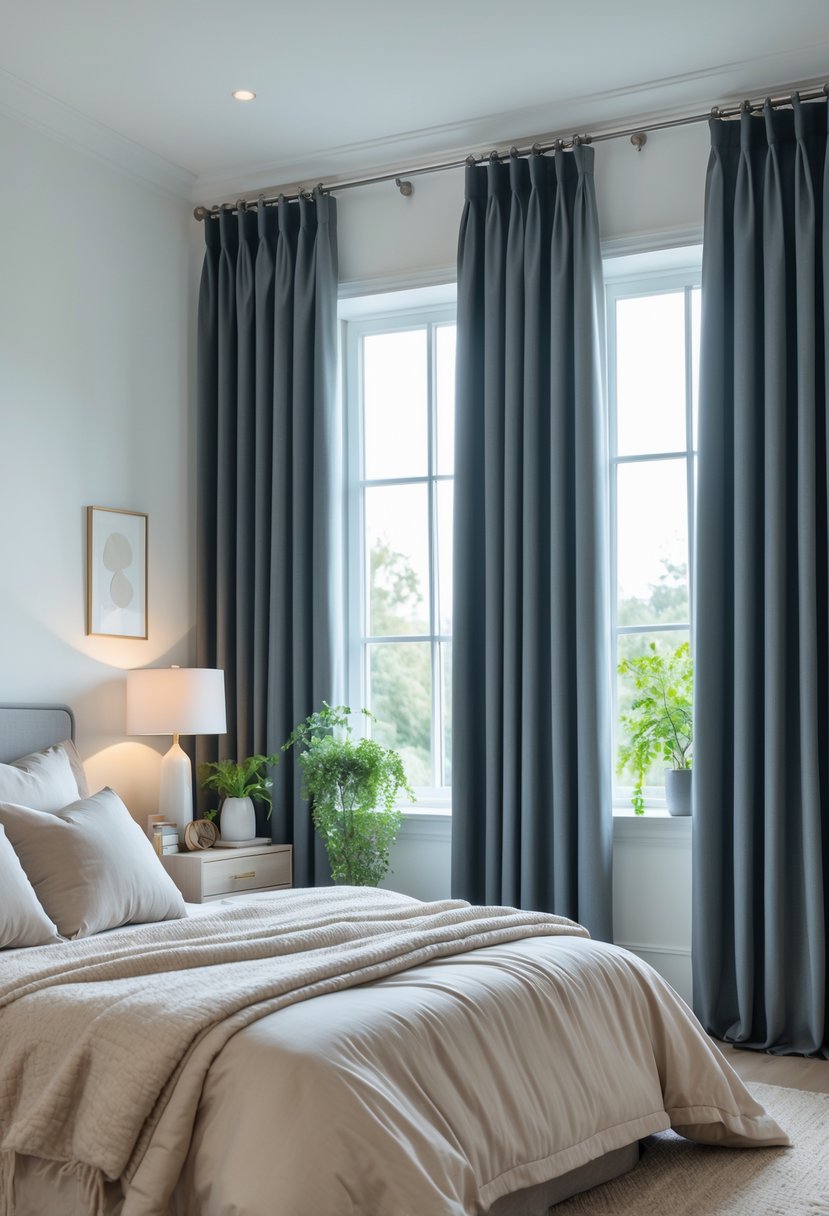
Blackout curtains block light, making bedrooms darker and more restful. They help reduce noise as well, which supports better sleep.
These curtains also improve temperature control by insulating against heat and cold. This creates a more comfortable environment for sleeping.
Many blackout curtains come in different styles and colors. This allows them to fit well with various bedroom designs while improving sleep quality.
7) Introduce indoor plants for freshness and color
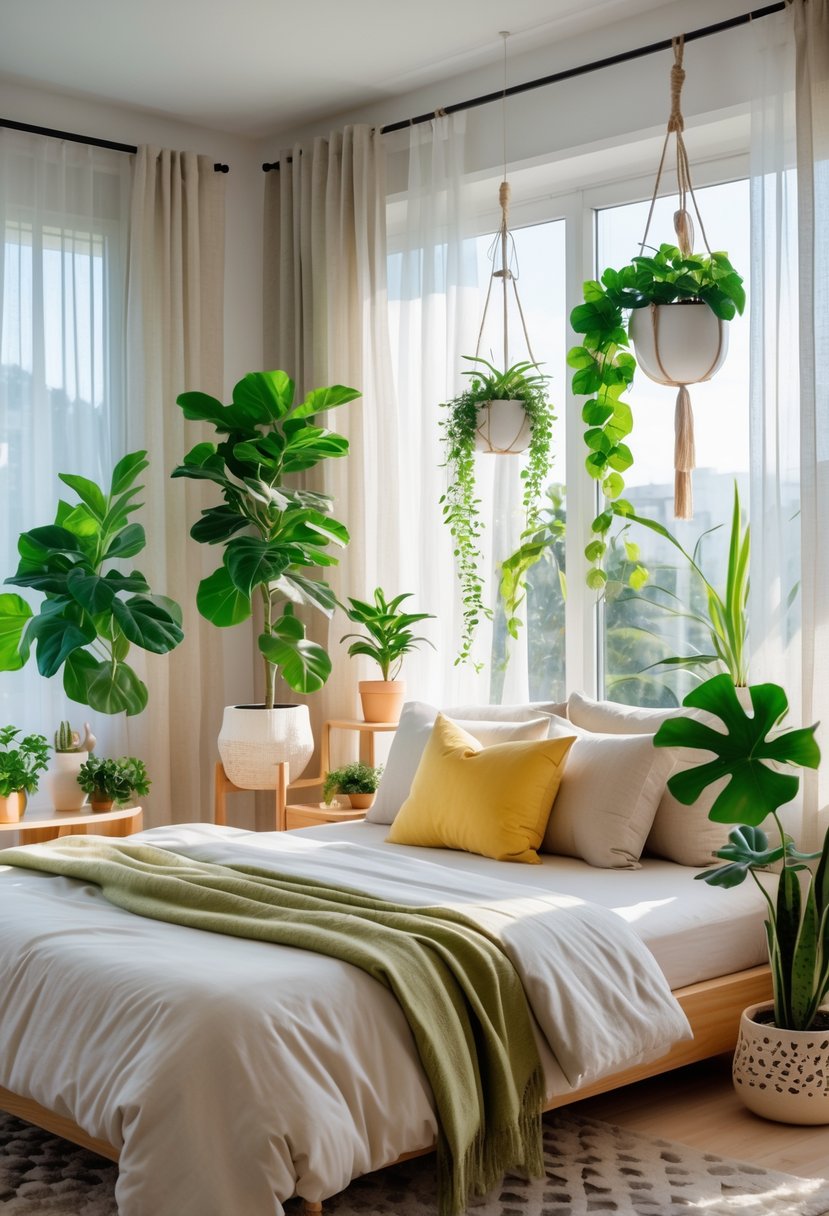
Adding indoor plants to a bedroom brightens the space and brings natural color. Plants like pothos or ivy work well because they are easy to care for and add a soft, green touch.
Hanging plants above the bed can create a calm, inviting feel. Small pots with succulents or ferns can fit on shelves or nightstands to add life without clutter.
Plants also help improve air quality and make the room feel more peaceful and fresh.
8) Mix modern and vintage furniture pieces
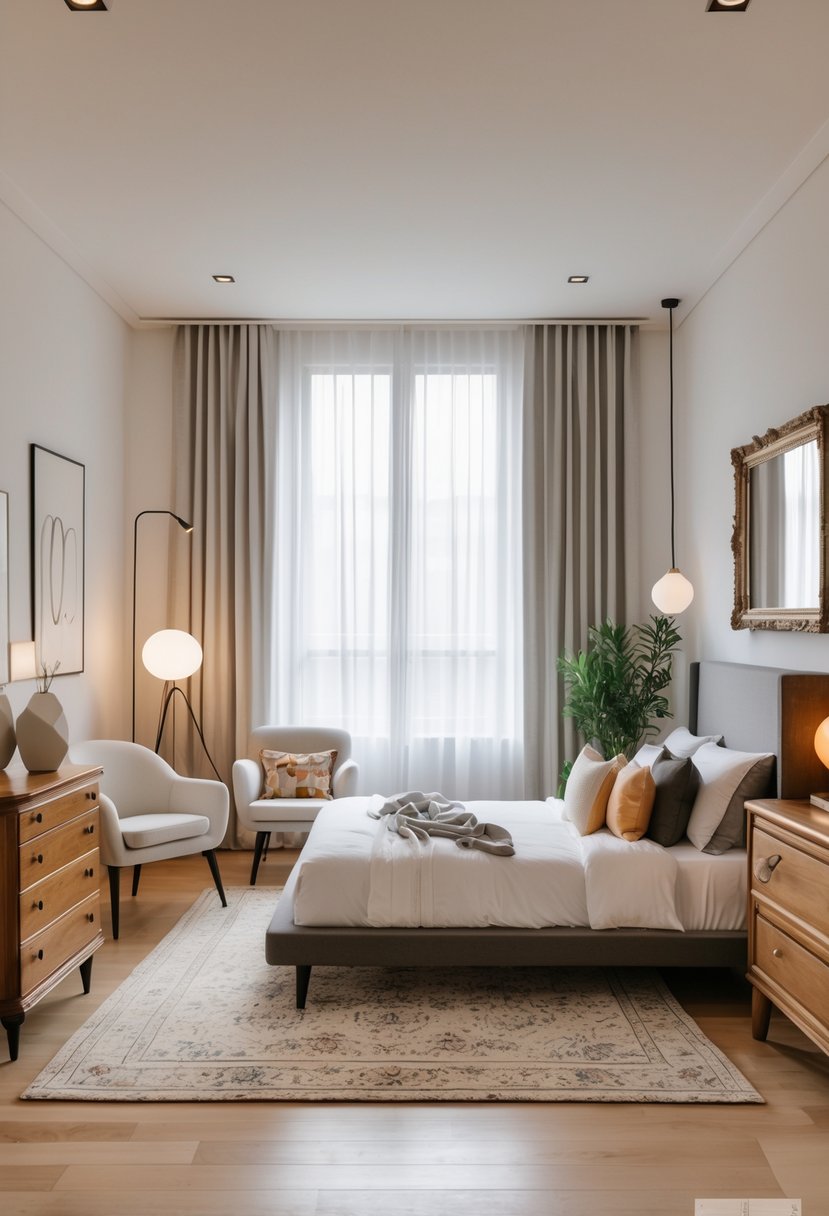
Mixing modern and vintage furniture adds character and depth to a bedroom. The key is to balance styles by choosing a few statement vintage pieces and pairing them with clean, modern items.
They should use a simple color palette to keep the room cohesive. For example, a vintage dresser paired with a sleek modern bed creates a strong contrast without clashing.
Textures and materials also play a role. Combining wood, metal, and fabric helps create a layered look that feels both timeless and fresh.
9) Create a gallery wall with framed art or photos
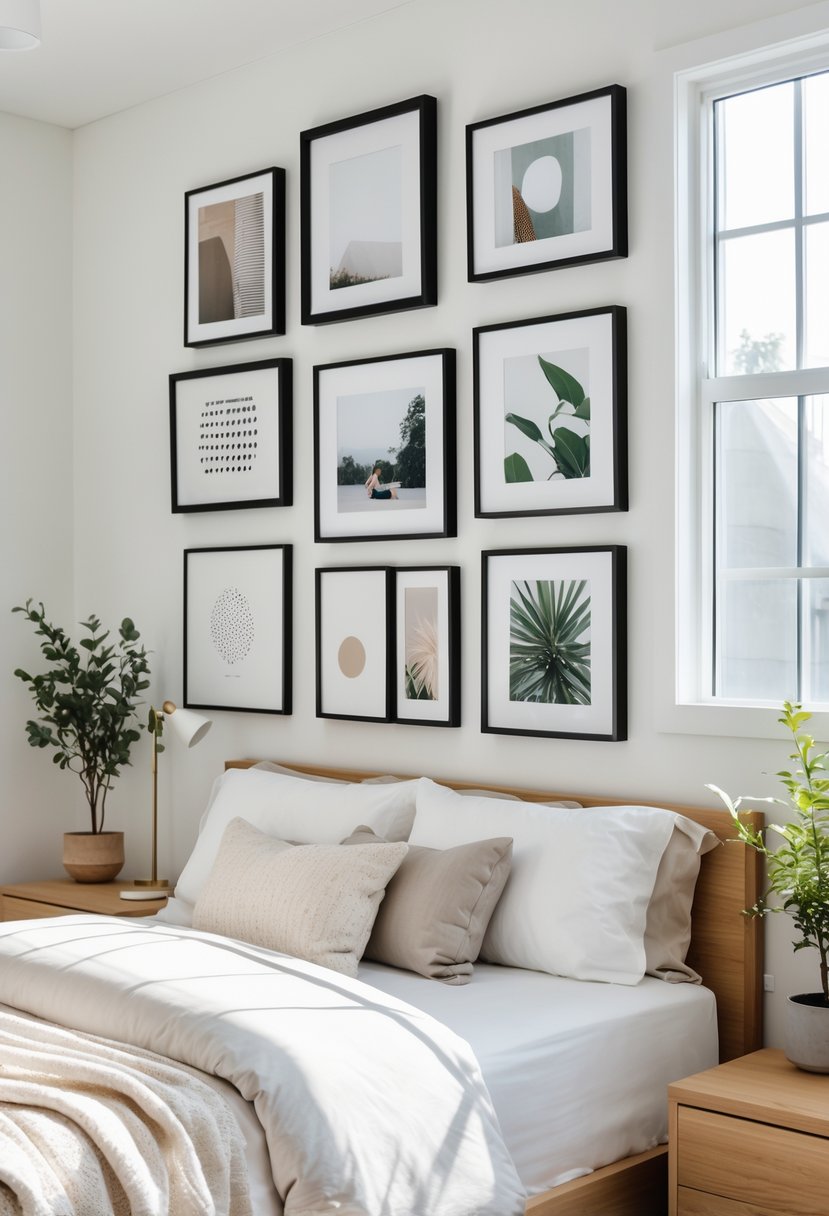
They can arrange framed art or photos in a grid or an eclectic mix. Using frames of different sizes and shapes adds visual interest.
Spacing is important; 2 to 3 inches between frames usually works well. He or she can include other items like small sculptures or memorabilia to make the wall more personal.
A gallery wall brings character to the bedroom and fills empty spaces with meaningful decor. It is easy to update by swapping out pictures or art over time.
10) Use layered bedding with throws and decorative pillows
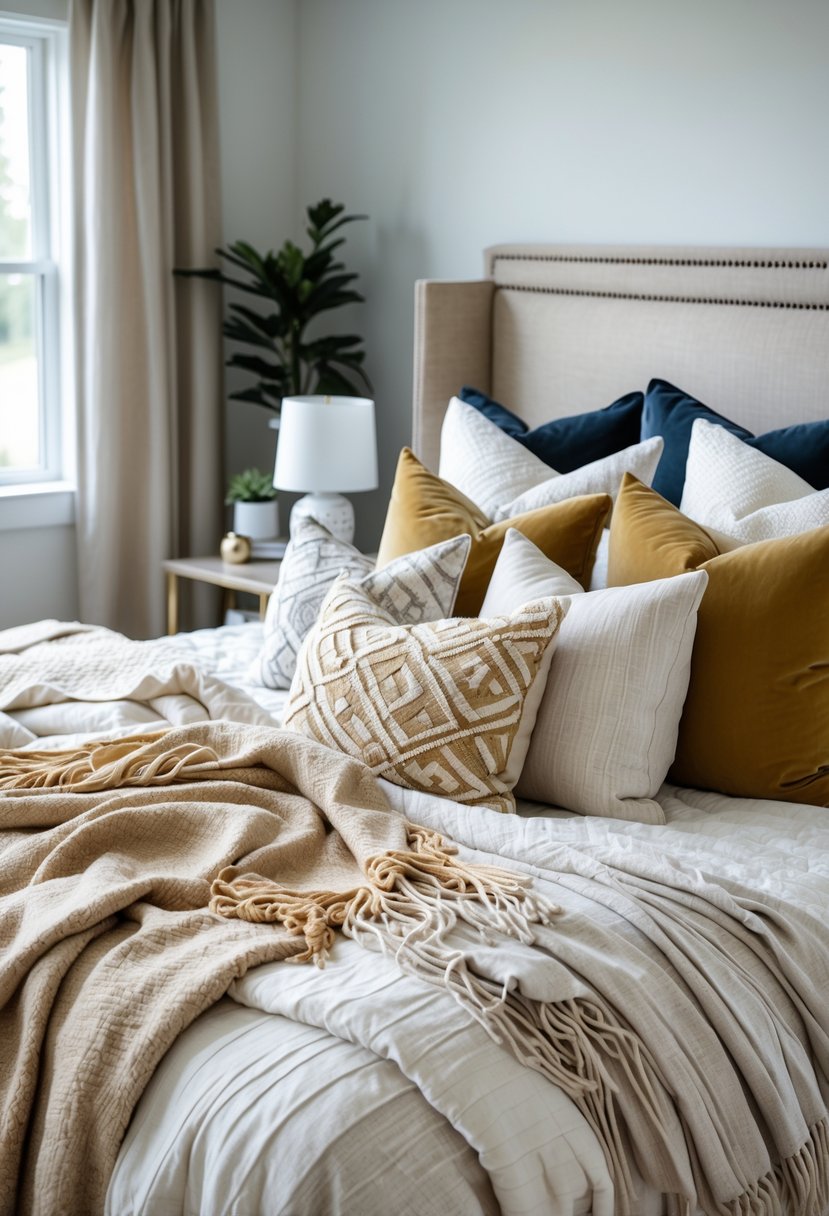
Layered bedding adds texture and depth to a bedroom. Using a mix of throws and pillows in different colors and patterns can make the bed look inviting and stylish.
Throws bring warmth and can be changed seasonally. Decorative pillows add comfort and can highlight color themes.
He or she should start with soft, breathable sheets. Adding layers gradually keeps the bed from looking cluttered while creating a cozy feel.
Color Psychology in Bedroom Decor
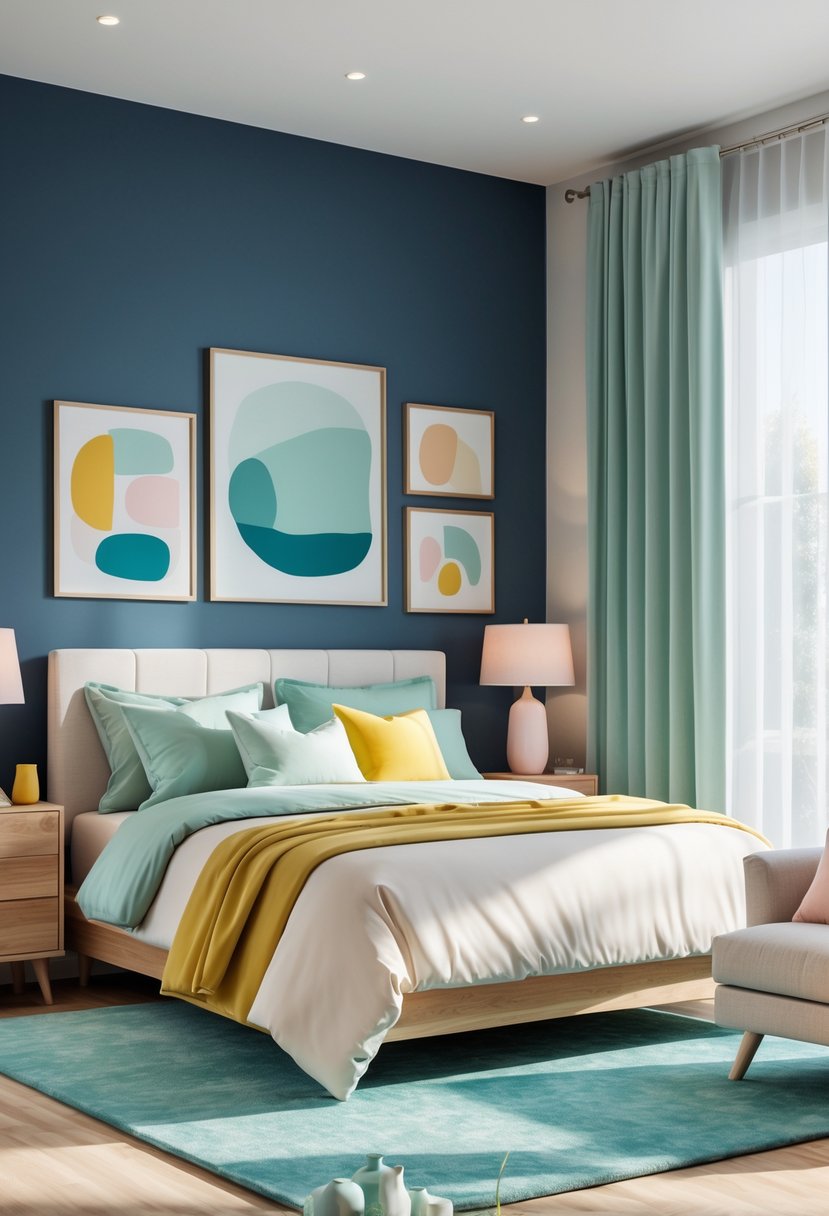
Colors in a bedroom affect mood, energy, and sleep quality. Choosing the right shades can create a calm space or add vibrancy. Decisions between soft neutrals and bright hues shape the room’s feeling and purpose.
Choosing Mood-Boosting Palettes
Soft blues and greens are popular for promoting calm and relaxation. These colors reduce stress and make it easier to fall asleep. Muted pastels also work well by creating a light, soothing atmosphere.
Warm colors like soft yellows and peach tones can lift mood without being too stimulating. They bring warmth and comfort, helping some people feel more cozy and happy. However, very bright or intense reds, oranges, or yellows can cause alertness and make sleep harder.
The key is balancing colors to support relaxation while avoiding ones that increase tension or energy. Lighter shades are usually better for calming the mind and improving sleep.
Neutral vs. Bold Color Strategies
Neutral colors like beige, gray, and soft white offer a clean, stress-free backdrop. They work well for all room sizes and lighting. Neutrals create a versatile base and make it easy to change decor without repainting.
Bold colors add personality and can energize a space. Deep blues, rich greens, or even dark grays give a dramatic, cozy feel when used on one wall or in accents. Bold colors can make larger rooms feel more intimate but may be overwhelming in small spaces.
Using a mix of neutrals and bold tones allows control over the room’s mood. Neutrals calm while bolds add interest without sacrificing relaxation.
Balancing Function and Aesthetics
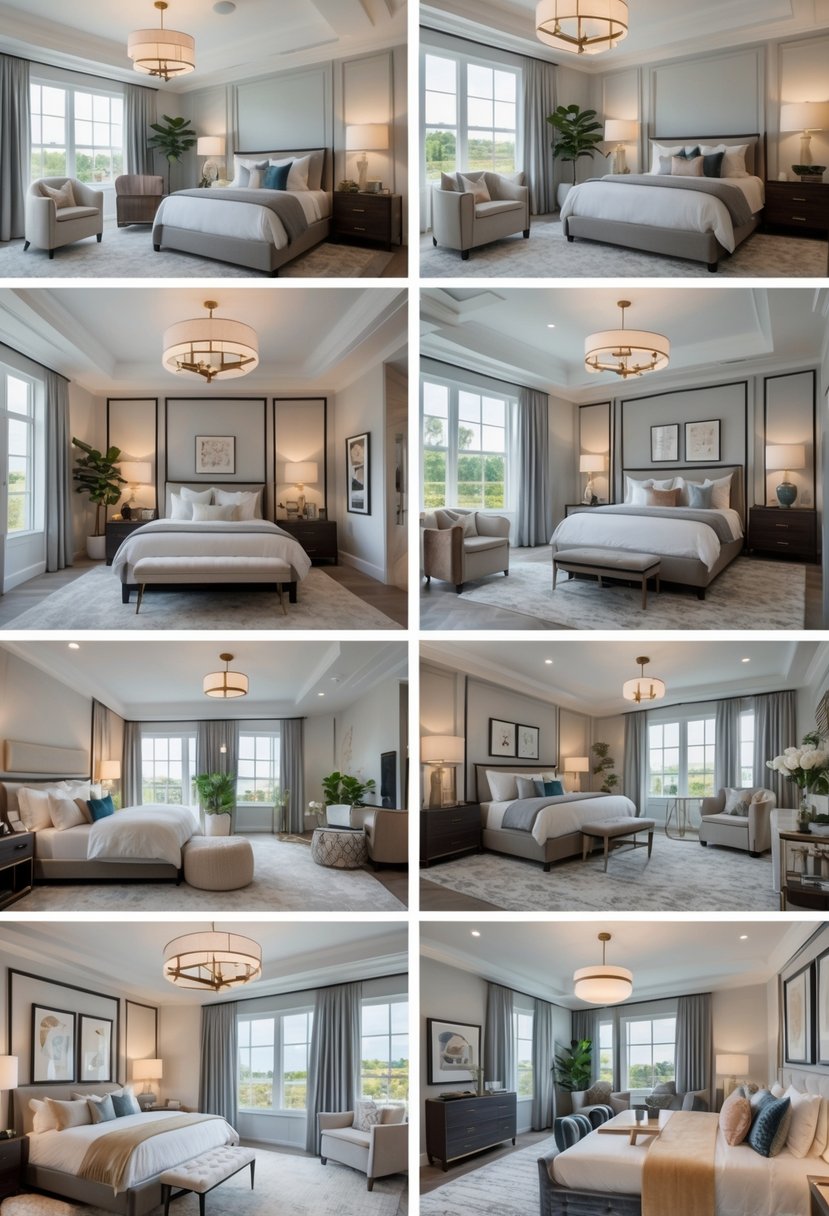
A well-designed bedroom blends style and usefulness. It makes the space comfortable while keeping it visually appealing. This balance involves smart placement of furniture and adding accessories that serve real purposes without crowding the room or clashing with the design.
Optimizing Layout for Comfort
Creating a flow that supports daily activities is key for a comfortable bedroom. Placement of the bed should ensure easy access from both sides. Positioning it away from direct light or drafts improves rest quality.
Space should allow smooth movement, avoiding clutter near doors or walkways. Using rugs or lighting can define zones, like reading or dressing areas.
Keeping furniture proportional to the room size prevents overcrowding. Multipurpose pieces, like beds with storage drawers, help maximize space without sacrificing comfort or style.
Incorporating Functional Accessories
Functional accessories add convenience and enhance design. Good lighting is essential — combining overhead lights with bedside lamps supports different needs, such as reading or relaxing.
Storage solutions like baskets, shelves, or wall hooks keep belongings organized and within reach. Mirrors not only serve practical use but also reflect light and make the room feel larger.
Choosing decor with dual purposes, like a decorative clock or a bench with hidden storage, supports both style and function without extra clutter.
Frequently Asked Questions
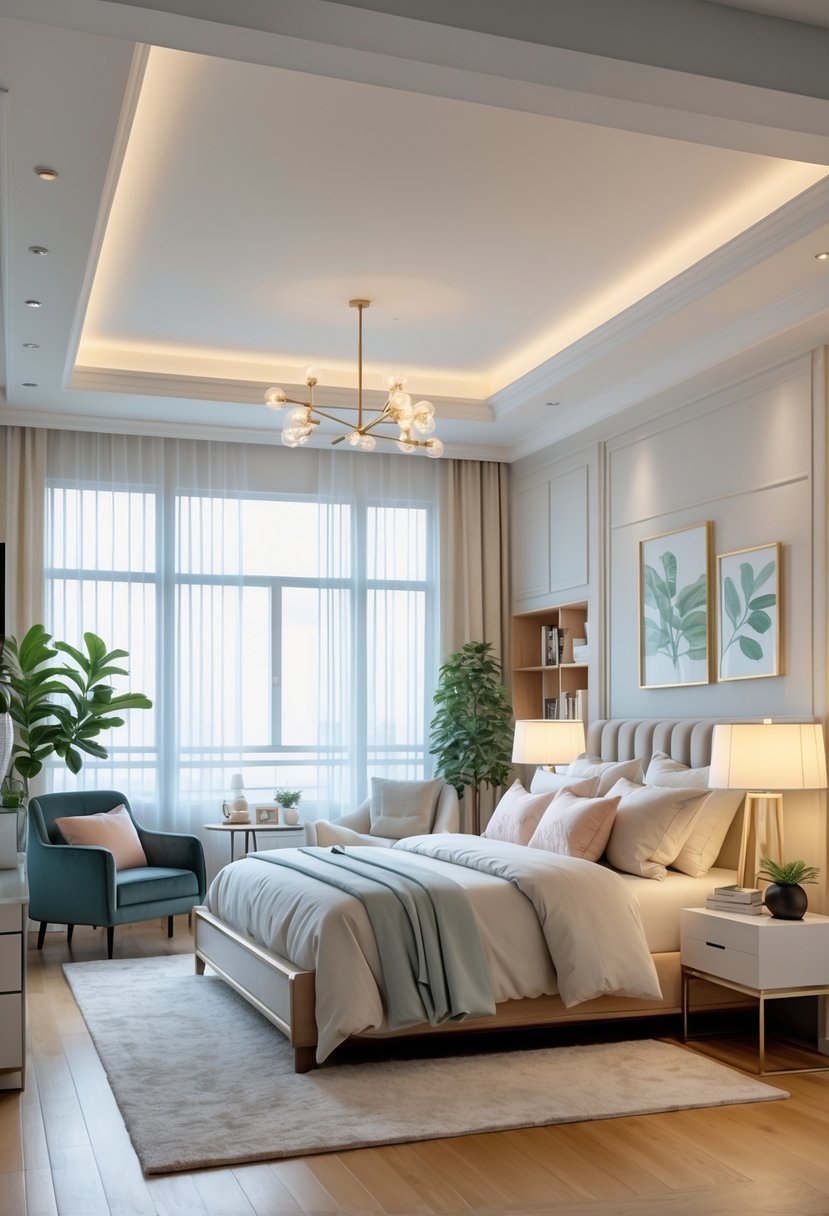
Efficient use of furniture and clever layout choices help maximize small bedrooms. Choosing the right colors also plays a big role in making a room feel larger and more inviting. Combining function with style is key in a compact space.
What are some space-saving furniture ideas for a small bedroom layout?
Multi-purpose pieces work well in small spaces. Beds with built-in storage drawers or lift-up frames keep items out of sight. Floating shelves add storage without taking floor space.
Foldable desks or wall-mounted tables save room when not in use. Using a statement headboard can add style without bulk.
How can one arrange a 10×10 bedroom to include a study area?
Place the bed against one wall to free up floor space. A corner desk or compact workspace fits well near a window for natural light.
Floating shelves can store books and supplies, saving desk space. Layered lighting with floor lamps and pendants helps define the study zone.
What are the best color schemes for a smaller bedroom to enhance its perceived size?
Neutral paint tones on most walls create an open, airy feel. Adding a bold accent wall with deep or rich colors can add depth without shrinking the room visually.
Light-colored rugs with texture bring warmth and prevent the space from feeling flat. Avoid overly dark, uniform colors on all walls.

